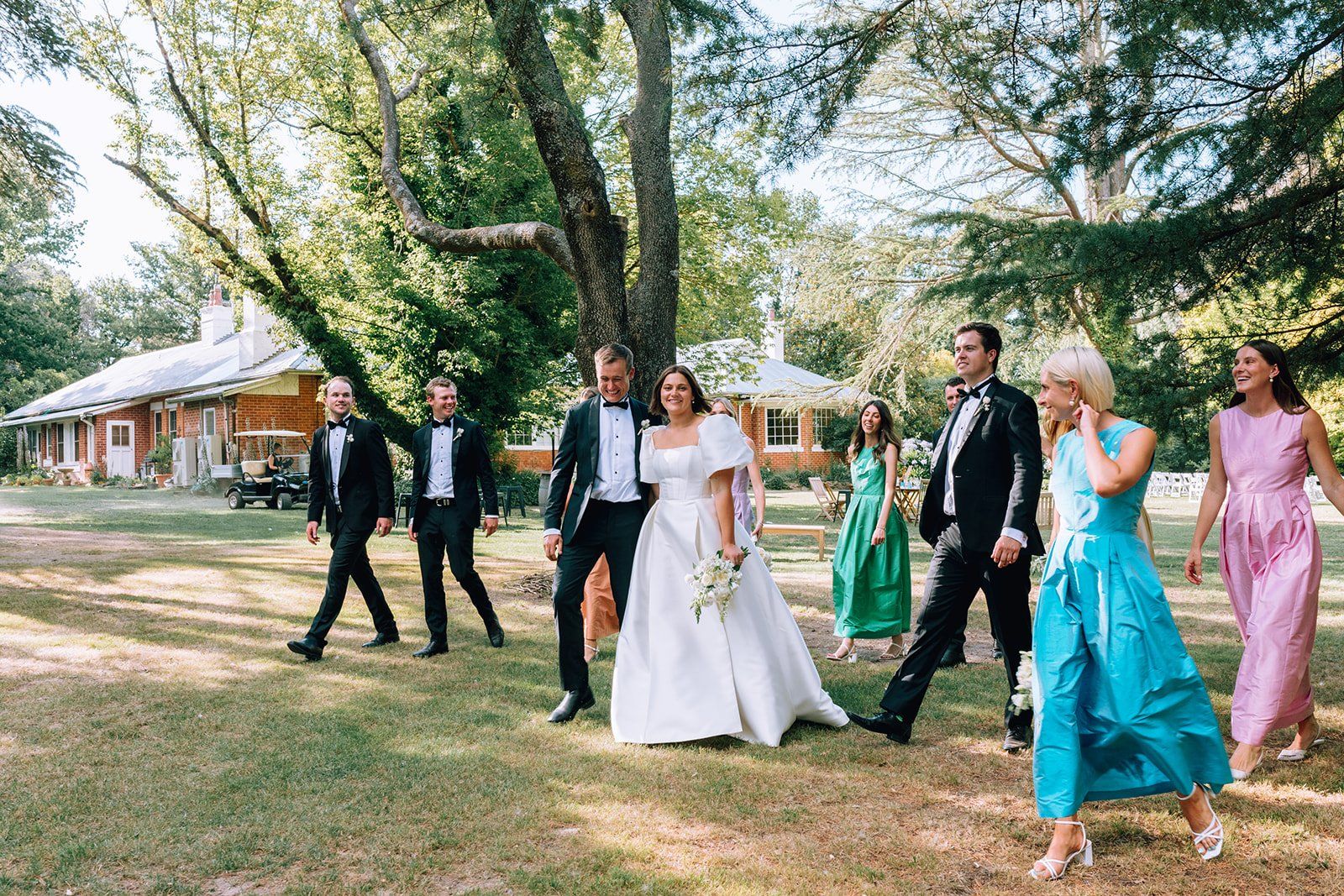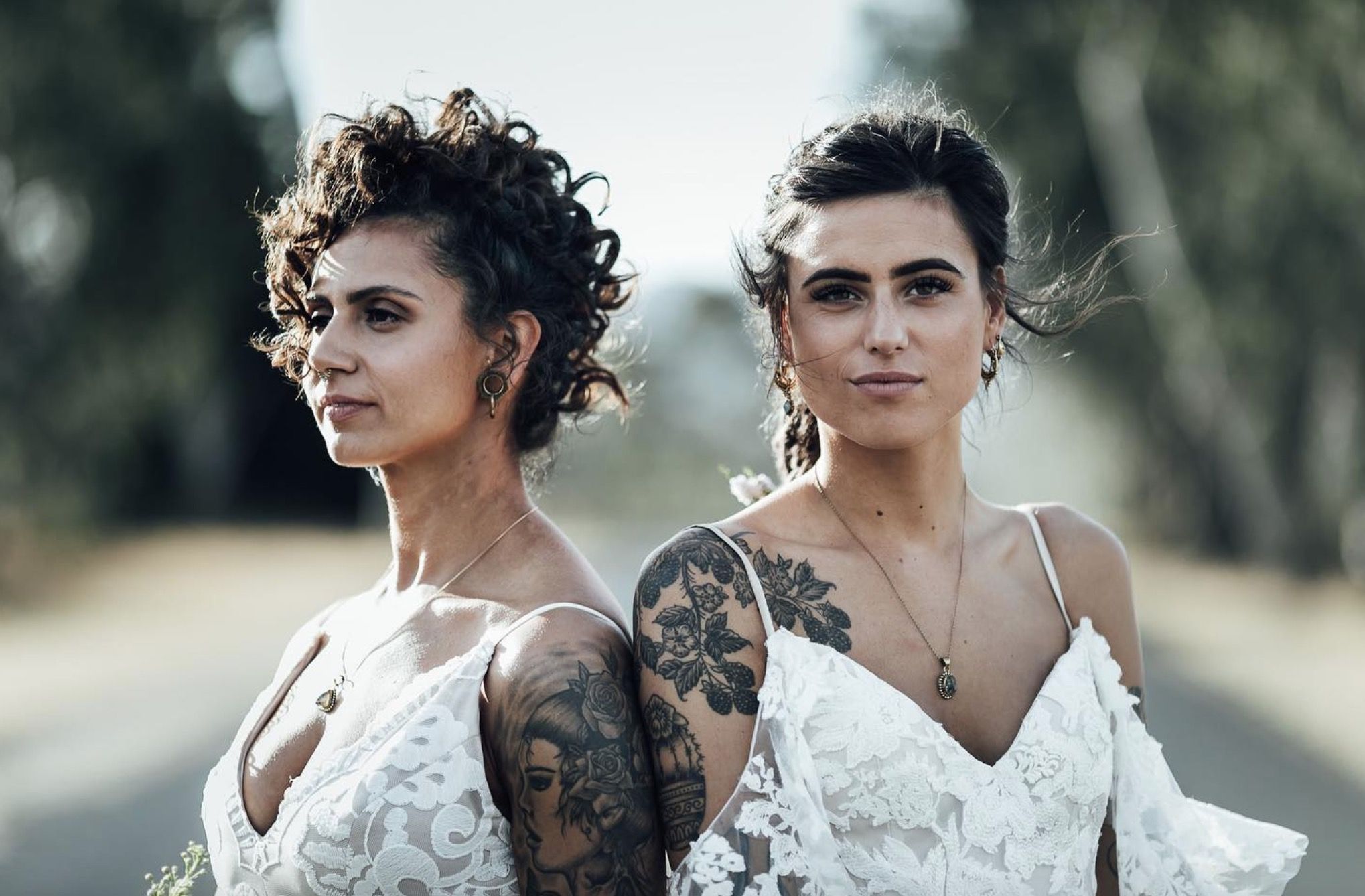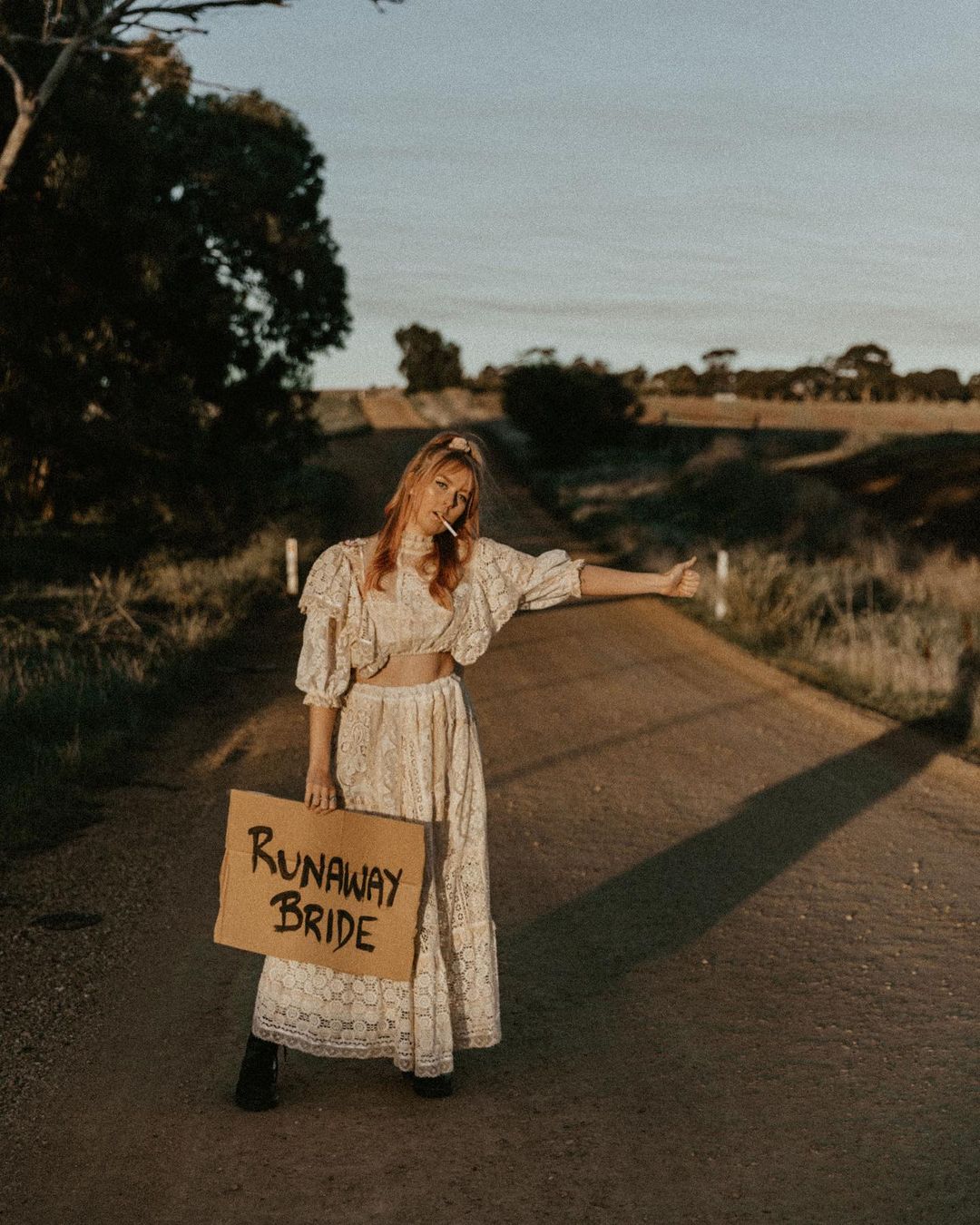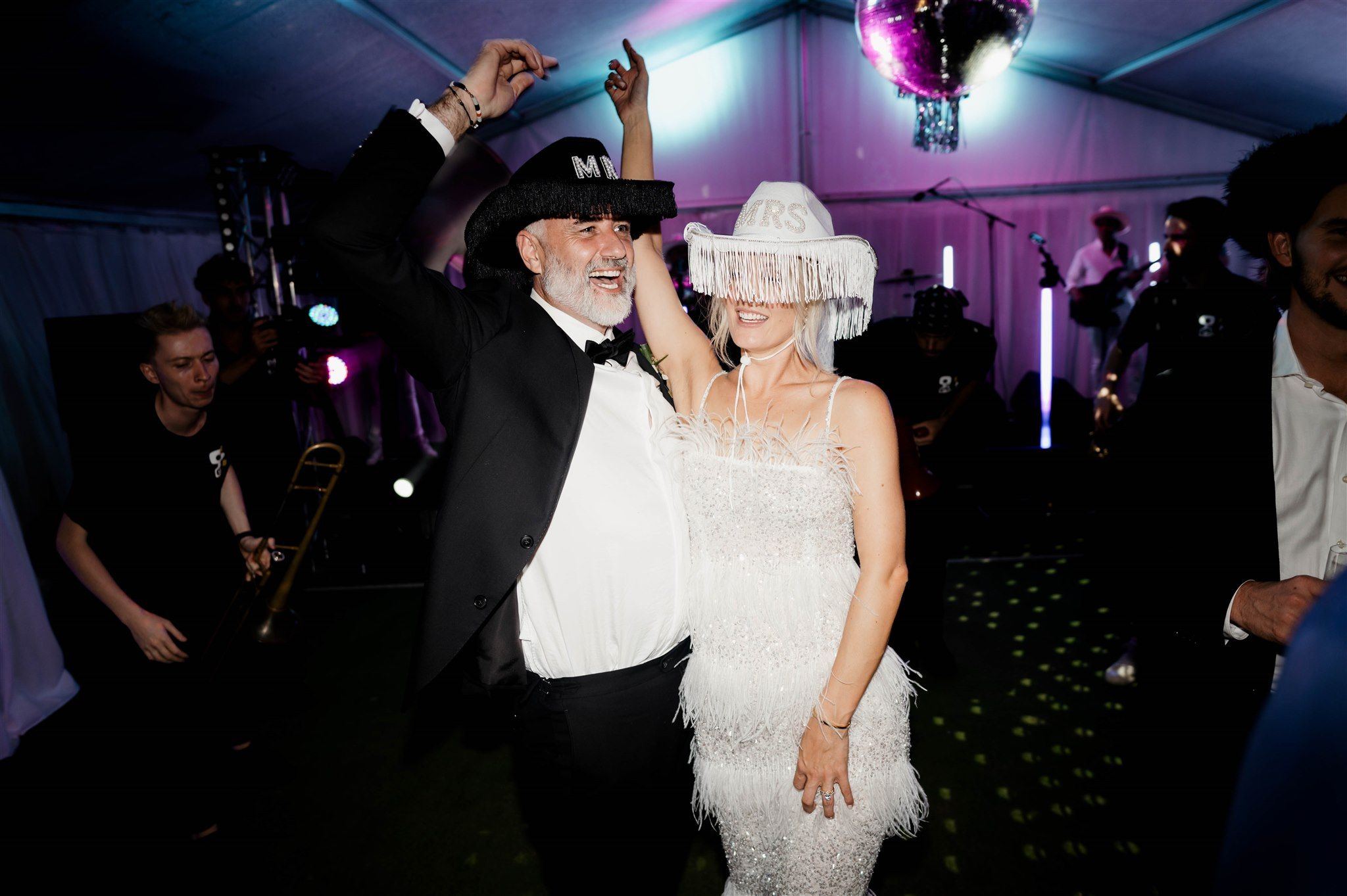Pictured ring by RUUSK.
Before we get into this, it’s probably important to make the distinction between engagement rings and wedding rings.
An engagement ring is the ring that typically one person in the relationship proposes with. It’s often a more elaborate design or larger gem than the wedding ring.
A wedding ring (or wedding band) is the ring that is exchanged during the wedding ceremony. While an engagement ring is often only worn by one person (the person proposed to), both people getting married typically wear a wedding ring.
Now we’ve got that clarified, we’re answering some common questions about wedding rings.
When do you exchange wedding rings?
Wedding rings are exchanged during the wedding ceremony, usually after the vows are said.
How far in advance do we need to organise our wedding rings?
We’d be getting these organised at least six weeks before the big day. Consider the fact the jeweller needs to make them and if you’re getting married in warmer months (i.e. peak wedding season), there are probably plenty of other couples that are also organising their wedding rings at the same time. If unsure, discuss this with your jeweller – they’ll be able to give you a good time guide.
How much do wedding rings cost?
Look, we’d be plucking a figure from the sky here as the cost of the rings comes down to two things: the metal used and whether there are any stones included.
There are several metals to choose from for a wedding ring, such as yellow gold, white gold, platinum, titanium, tungsten, silver and stainless steel. Plain bands can range from hundreds to thousands of dollars, depending on the material. Bands with diamonds or other precious stones are obviously going to cost more.
What are the qualities of the different metals used in wedding rings?
Here’s a breakdown:
Platinum
It looks like silver but is the most rare (and expensive) of the precious metals. It’s also a denser and stronger metal, making it ideal for lasting the test of time. Platinum will last, unmarked, forever. Ideal to have stones like diamonds set in it. Can be resized.
Gold and white gold
Gold bands are fairly sturdy. They’re a traditional and timeless choice. Obviously there’s the yellow gold we’re all familiar with but white gold is also a great option for those that prefer a silver look but with more durability than silver (it’s a softer metal in comparison). White gold is an alloy of gold and and white metals such as silver and palladium. Both yellow gold and white gold options are durable and very scratch-resistant too. Ideal to have stones like diamonds set in it. Can be resized.
Titanium
One of the more modern jewellery metals. Titanium is lightweight (so gents or ladies that don’t ordinarily wear jewellery might find it more comfortable) a slightly darker grey than silver and is super durable. Cannot be resized.
Tungsten
Similar to titanium in colour (or even darker), it’s also a very hardy metal and a fave for tradespeople that work with their hands a lot. Cannot be resized.
Palladium
A white metal like platinum, palladium is more affordable. It’s not as strong as platinum though definitely tough enough to be used as a wedding ring and word daily. Can be resized but not all jewellers can do it.
Stainless steel
We all know stainless steel. It’s affordable, strong and durable and can be polished to take on different looks. Cannot be resized.
Sterling silver
Sterling silver is actually pure silver mixed with copper or another metal to make it stronger. Being one of the softer metals, it’s not the most durable option for a wedding ring as it can scratch, bend and mark easier than other metals, though it is quite affordable. Can be resized.
Do I even need a wedding ring?
No. It’s definitely the tradition to exchange wedding rings during the wedding ceremony but it’s by no means necessary. And if you do decide to exchange wedding rings, the band doesn’t need to be forged of metal or precious stones. It could be wood. It could even be a tattoo of a simple line around the left ring finger. It’s entirely personal choice.
What order does a wedding ring sit on my finger (in relation to an engagement ring)?
The wedding ring slots on your finger first, engagement ring second. In other words, the wedding ring is closer to the palm of your hand.
Do I need to use the same jewellery designer for my wedding ring that made my engagement ring?
Not at all. You might find it helpful in that you or your partner may already have a relationship with the jeweller, or if the engagement ring is more of a unique, bespoke piece the original jeweller may already have considered the type of wedding ring that would complement it. That said, any good jeweller will be able to match a wedding ring to your engagement ring too, so if you wanted to switch things up and use a different designer, that wouldn’t be a problem.
As with everything wedding-related, take the time to consider whether exchanging and wearing wedding rings suits you guys. If you or your partner don’t love wearing jewellery, there’s no reason why you can’t forgo this entirely. Or exchange rings down the track if money is tight come wedding-time (or you’d just prefer to spend it on a five-piece live band). Your wedding, your way – always.
And if you’re looking for some ring designers, we’d recommend these guys.
++++
Can we interest you in some more advice? How about:
The best guide to writing your wedding vows you’ll find online (we’re pretty confident here)
Wedding traditions you might want to break – and things to do instead
Looking for more ideas?
We’ve brought together advice, articles, and inspiration on our Advice & Ideas blog to help you find your feet.








